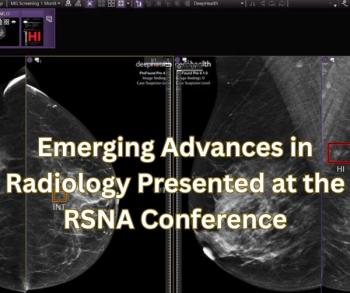
IHE develops guidelines to address expansion into electronic health records
Guidelines developed by proponents of the Integrating the Healthcare Enterprise initiative may smooth the way for building PACS into electronic health records.
Guidelines developed by proponents of the Integrating the Healthcare Enterprise initiative may smooth the way for building PACS into electronic health records.
The guidelines, which the IHE is calling integration profiles, address issues that vendors and users will face as they plan the development and adoption of new technologies. The IHE initially tackled concerns related to the interoperability of medical imaging systems. The new profiles expand this imaging-centric approach to medical specialties outside radiology and into much more broadly based information technology.
A panel discussion June 23 at the Computer Assisted Radiology and Surgery congress in Berlin examined the impact of the IHE, now in its seventh year. Key presenters included Dr. Frits H. Barneveld Binkhuysen, president of the Radiological Society of the Netherlands, Cor Loef of Philips Medical Systems, and Nikolaus Wirsz of Siemens Medical Systems.
Developing electronic health records has become a focus of global medical informatics efforts. Four new profiles released by the IHE in 2004 and tested this year can improve information exchanges across the healthcare enterprise, Loef said. One profile, which focuses on cross-enterprise document sharing, is the first step toward an interinstitutional longitudinal electronic health record.
The cross-enterprise document-sharing profile is intended to allow safe and easy sharing of medical documents between different healthcare enterprises. It is designed around a document registry that maintains a database of all known clinical documents, their location, and metadata describing them. The profile defines transaction standards that determine how users provide data and access them in different repositories.
Another profile highlighted at the CARS congress involves collecting and providing access to basic information about the healthcare workforce. These "personal white pages" are intended to provide fast access to workflow information, such as phone numbers and e-mail addresses.
Another profile, called audit trail node authentication, defines basic security features for healthcare IT infrastructure, including system-to-system authentication, encrypted network communication, and a security audit trail repository.
The fourth addresses the means for making queries about patient demographics. This profile enables applications to query a central patient information server for a list of patients based on user-defined search criteria. It is intended to allow users to select from the list in lieu of retyping patient data.
Newsletter
Stay at the forefront of radiology with the Diagnostic Imaging newsletter, delivering the latest news, clinical insights, and imaging advancements for today’s radiologists.




























